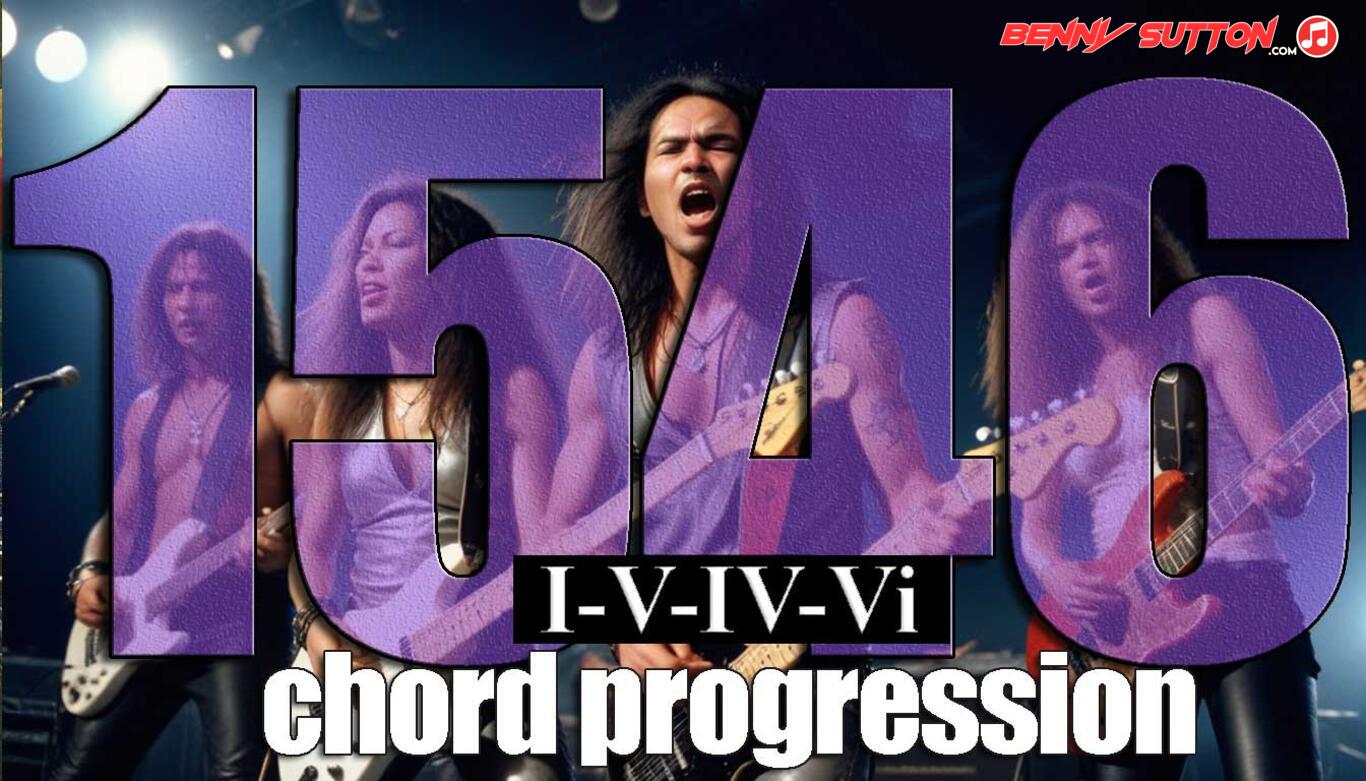Widely known as the “Axis” progression, represented by I–V–vi–IV. This four-chord loop dominates modern pop, rock, and ballad writing. It maintains constant motion while staying diatonic to the major scale, creating seamless melodic compatibility. Its circular harmonic flow allows strong vocal lines and emotional continuity without modulation.
This is common in songs by U2, Green Day, Adele, and countless others. if you haven't written a song with this chord progression you haven't lived! It is said record execs won't even give bands studio time unless they use it!
The I–V–IV–vi Progression: Modern Tonal Symmetry
The I–V–IV–vi progression represents one of the most balanced harmonic structures in tonal music. It combines strong functional motion with cyclical symmetry, offering both predictability and emotional continuity. Closely related to the better-known I–V–vi–IV “Axis” sequence, this variation rearranges the order to place the subdominant (IV) before the relative minor (vi), softening resolution and encouraging melodic interplay.
Functional overview
In Roman numeral terms, the progression moves from the tonic (I) to the dominant (V), then to the subdominant (IV), and finally to the relative minor (vi). Each chord has a defined harmonic role:
- I (Tonic) – establishes key center and tonal gravity.
- V (Dominant) – introduces directed tension via the leading tone.
- IV (Subdominant) – offers contrast by pulling away from the tonic.
- vi (Relative Minor) – provides release with a more introspective color.
This four-chord rotation creates a complete tonal paragraph: stability, tension, release, and reflection. In modern songwriting, its balanced contour allows continuous looping without fatigue, supporting both verse and chorus sections seamlessly.
Common examples...
| Key | I | V | IV | vi |
|---|---|---|---|---|
| C Major | C | G | F | Am |
| G Major | G | D | C | Em |
| D Major | D | A | G | Bm |
| A Major | A | E | D | F#m |
| E Major | E | B | A | C#m |
| F Major | F | C | Bb | Dm |
The progression often repeats cyclically, with the final vi resolving naturally back to I for a closed loop. Unlike the 1950s I–vi–IV–V sequence, this structure places the minor chord later, producing a more contemporary, reflective quality that suits mid-tempo pop, soft rock, and cinematic scoring.
Variants and harmonic extensions
Writers frequently embellish this foundation through secondary dominants or suspensions:
Such variations maintain the same functional pattern while introducing timbral contrast and modal flavor. Guitarists often exploit open-string voicings (especially in G or D) to create shimmering textures, while pianists use inversions to maintain common tones between chords.
The voice-leading between V and IV is particularly rich: the leading tone (7th degree) of the key resolves downward by half step when moving from V to IV, creating a smooth contrapuntal link uncommon in older progressions. This inward motion contributes to the progression’s characteristic sense of flow.
Improvisation and melodic approaches
Over this sequence, the major scale of the key remains the default source material. For additional color:
- Use major pentatonic for broad melodic phrasing.
- Apply mixolydian over the V chord to emphasize its dominant color.
- Over the vi chord, switch to aeolian or dorian to highlight the modal shift.
More advanced improvisers superimpose chord-specific arpeggios or guide tones (3rds and 7ths) to trace harmonic motion. Another strategy is modal interchange, borrowing from the parallel minor (e.g., using bVII instead of V) for contrast in later repeats. The progression’s static key center makes it ideal for reharmonization experiments—altering one chord per repetition without destabilizing form.
Cultural and stylistic usage
The I–V–IV–vi progression gained prominence in 1980s pop and continues to anchor modern rock and cinematic pop scores. Its symmetry supports emotional dynamics ranging from introspection to triumph. In minimalist or ambient contexts, producers loop it with evolving textures rather than distinct chord changes, treating harmony as a continuum. In orchestral or film writing, the IV–vi motion offers a satisfying emotional descent while maintaining major-key resonance.
Compositional insight
While deceptively simple, the progression’s power lies in voice-leading economy. Every chord shares at least one common tone with its neighbor, producing continuity. This feature reduces perceived harmonic tension, allowing melodies to float freely without excessive modulation. To avoid cliché, vary rhythmic phrasing, introduce suspensions, or alternate between diatonic and borrowed chord colors.
Ultimately, the I–V–IV–vi sequence demonstrates that sophistication in harmony does not depend on complexity but on balance and proportion. Its circular symmetry, clear functional relationships, and adaptable modal framework make it one of the most musically efficient progressions in the modern harmonic vocabulary.
